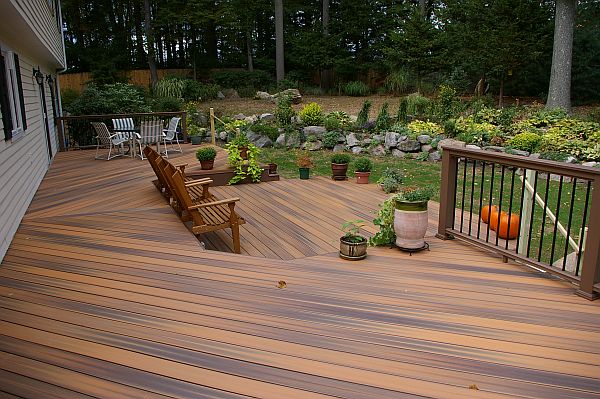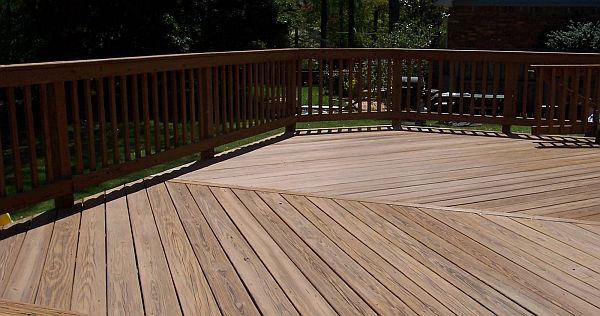Whether it be the wrong color, years gone by, or exposure to the elements, there are numerous reasons why the stains on your decking should be removed. Many homeowners opt to treat their own decking as the use of a professional can be expensive. While stripping the stain oneself will most certainly be involved and time-consuming, the cost benefits can be substantial.

First, the surface should be swept and cleared of all debris, such as leaves and twigs. Particular notice should be paid to the cracks and crevices in between boards as a lodged leaf will rot and eventually cause the wood to rot as well.
Once cleared, apply a liberal amount of chemical stain stripper with a polyester brush, roller, or a pump sprayer. Allow the stripper to sit until the color begins to lift, and then scrub along the wood grain with a hard bristle brush. The stain stripper will need to be rinsed with large amounts of water.
Although a pressure washer is not necessary, it can eliminate some need for scrubbing, and will speed along the process, particularly with larger decks. But extreme care should be taken when using a pressure washer; not only can a mis-aimed stream of water hurt nearby pots or planters, but an overly directed shot at the deck can permanently damage the wood.

After the chemical application and rinsing, there may still be difficult areas in which the color did not lift the same. Sanding is the only way to treat these particular spots. A chemical wood brightener should then be applied to the total area to neutralize the stripper and refresh the wood.
If the results are still not what you desire, this entire process can be repeated until you are satisfied. The decking will require days to thoroughly dry, at which point the surface can then be re-stained.












